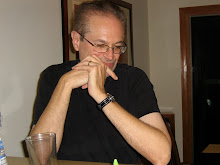Quote of the day:
“One likes people much better when they’re battered down by a prodigious siege of misfortune than when they triumph.”
--Virginia Woolf
Quote of the day no. 2:
"Genius is one percent inspiration, ninety-nine percent perspiration."
--Thomas Alva Edison
Thomas Edison died 76 years ago today, in 1931. There are many people who remember that day, and the stir caused by his death. He was a very influential man whose work changed the world.
He had a very rare combination of skills--brilliant inventor and successful businessman. He was able to bring to market and make money from many of his inventions and those of his collaborators.
My favorite Edison invention is the phonograph, which wound up ushering in the age of home entertainment. Looking back on it, the original phonograph was quite simple in concept: focus sound on a needle, which would then vibrate, and then etch those vibrations on a rotating cylinder.
(Remember that the phonograph recorded on cylinders. The gramophone, which came a bit later, recorded on discs.)
Edison faced a number of mechanical challenges with this invention, including getting the sound loud enough to cause the needle to vibrate. That’s why all the early phonographs have reverse megaphones, so that the sound could be concentrated in one spot.
And it was the reverse for playback, with the sound starting at the small end of the megaphone.
The same technology is in use today, with the added benefit of electronic amplification for both recording and playback. The invention of electronic amplification in the mid-1920s changed everything.
You can hear the voice of Thomas Edison recreating his first publicized test of the phonograph--”Mary had a little lamb”--by clicking here.
Don’t we live in an interesting world?
Thursday, October 18, 2007
The Birth of Home Entertainment
Labels: Music
Subscribe to:
Post Comments (Atom)







No comments:
Post a Comment